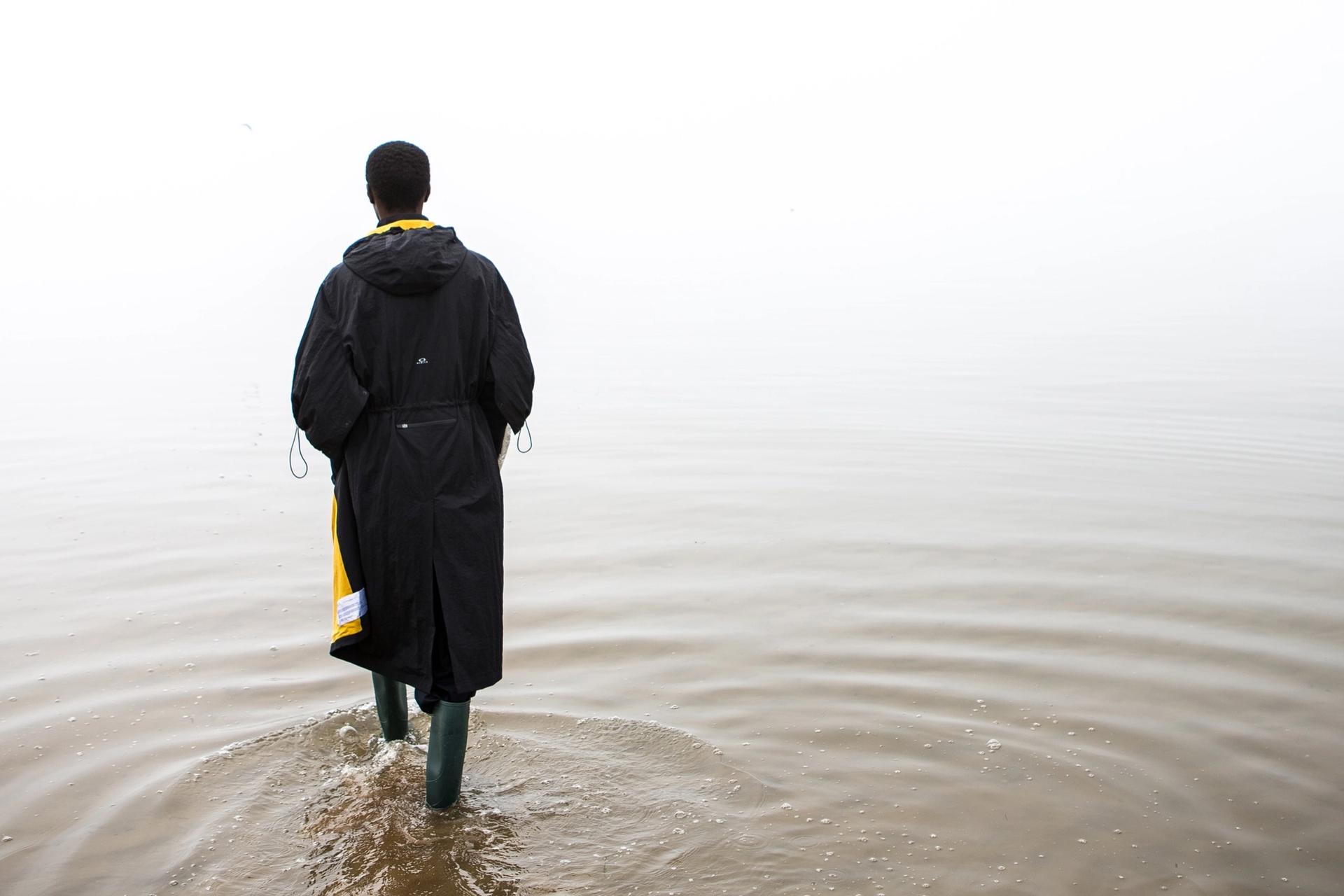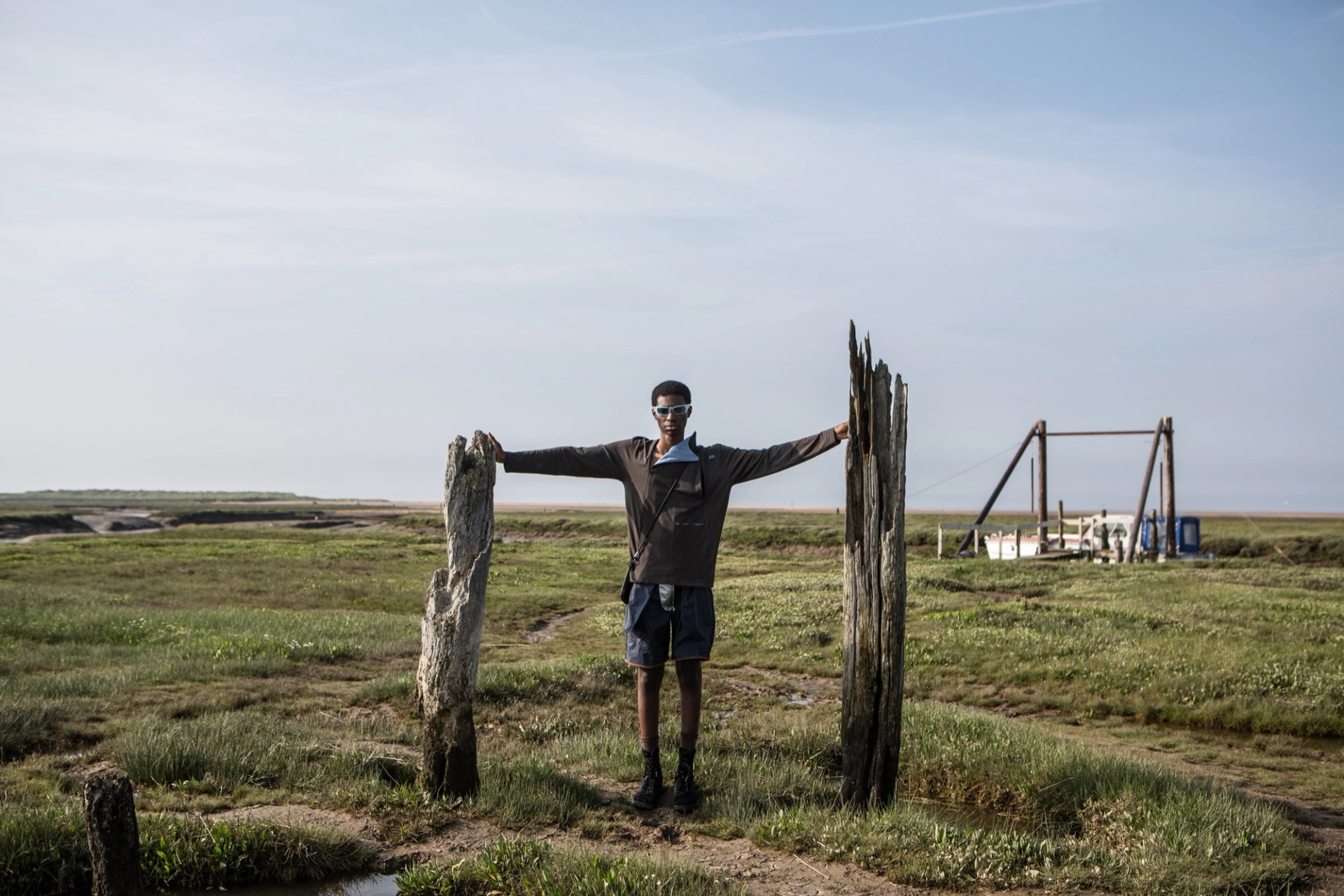COME RAIN OR SHINE: Oakley by Samuel Ross Season 2 Against the Cold
This week Oakley announced the second season of its partnership with Samuel Ross, the 27 year-old founder and creative director behind 2018 Fashion Award-winning streetwear label A-Cold-Wall*. For a leading sportswear company, Oakley has always been highly selective about introducing new products and product lines. The Orange County, California-based brand started out in the mid-1970s with “The Oakley Grip” – a grip designed at home by founder James Jannard for off-road motorcycles – and introduced its first motocross goggles around 1980. Soon Oakley’s flexible, unbreakable performance sunglasses would be a fixture at every sports victory: on cyclist Greg Le Mond, winning the 1986 Tour de France, on basketball star Michael Jordan (known to wear them while golfing), and on tennis champion Andre Agassi – who opted for the trademark wrap-arounds, not because he was paid to, but because he liked the product. Inevitably, Oakley became competitive in the mainstream, adding apparel, accessories, and footwear to its empire built on the High Definition Optics of its eyewear, still unmistakable in form and general ethos, and somehow synonymous with any and all “outdoor activity,” professional or amateur.
Enter Ross, who cut his teeth as a designer working for Yeezy and Off-White, and counts the rural England, and the drafty council flats he grew up in among his aesthetic influences – a background that brings a new vocabulary, and perhaps a little self-deprecatory irony, to Oakley’s historically earnest approach to performance. In a futuristic take on the company heritage, Oakley by Samuel Ross reinterprets two iconic Oakley frames – the Gascan and the M2 – in muted transparent colorways. Exploring “outdoor intelligence” with advanced materials and a sensibility for abstraction, the rest of the 30-piece collection seeks to bring the functional aestheticism of A-Cold-Wall* into Oakley’s realm of radical endurance, scientific precision, and generally “extreme” ambitions. Think chalky glacier and woodland montages, and earthier tones than the performance brand’s signature tequila sunrise palette of metallic orange and yellow gradients. Below, Ross reflects on the collaboration, the Oakley psyche, and the “modern outdoors protagonist.”
How does your approach to designing for the sun-soaked, Californian Oakley differ from your approach with A-Cold-Wall* – a British brand with roots in soggy fields, pebbledash housing, and the youth cultures that sprang out of them?
I think the difference is in the many facets of Oakley: they’re a global brand, with a plethora of markets, target groups, demographics, and narratives to tell. I’ve specifically burrowed into the outdoor adventurer/hiking narrative, designing garments that operate on the basis of serving the user in situ, which feels like one of the extreme, tension-inducing facets of Oakley. Tension and endurance are the bridge between my own practice, and the collections I produce with Oakley.
Oakley is a brand associated with extreme conditions and the great outdoors. A-Cold-Wall* is associated with a distinctly urban adaptability, and a lot of your own narrative has to do with council flats and the journey from province to metropolis. How are you meshing or approaching these two environmental contexts?
It’s about approaching the two contexts with clear intentions. Both provide a different narrative, and there’s potential for overlay, though that’s not my primary goal here. It’s not required.
A driving narrative I’ve built is the “modern outdoors protagonist” – the individual who frequently ventures into the outdoors, looking for physical endurance. It’s the idea of pushing oneself and steering towards a connection with nature – part myself, part what I admire in others. It’s embodying the missing physicality and looming linear experience we city dwellers opt to veer toward. Naturally this narrative changes the context, intent, and feel of communication – the image-making, garment design, and tone of voice differs between the two brands. Where A-COLD-WALL* embodies coarse, linear acoustics and brutalist installation – piercing hardship, even – Oakley by Samuel Ross offers an esoteric, malleable, and solemn approach to communication and storytelling pioneered by garments that have been tested for outdoor use. You’ll see through my Instagram and through the campaign videos: each collection is worn and thoroughly utilized in context.
Oakley has a strong and defined image in the American psyche, and in culture in general. How would you describe the brand’s cultural role, at large? How would you describe your informal relationship to the brand prior to this collaboration – what role did Oakley occupy in your mind?
Indeed. Oakley pre-relationship and now, in the midst of the collaboration, summarizes physical success: it’s an absolute, I’d say, beyond the American psyche. It’s embedded globally. Their cultural role/standpoint is: Oakley = physical experience. Oakley = technology-led innovation. Oakley = proven reliability.
Is there something aspirational in the Oakley brand, historically, because it is about having space, gear . . . time outside the city not always available to people?
Well, I perceive the modern and long-standing take on the Oakley brand to be based on aspiration – and those core values come through the focus and celebration of movement. There’s also a clear history of innovation. Oakley’s first product was a forward-thinking motorcycle grip – “The Oakley Grip” – for motocross bikes.
You’re using innovative materials and production techniques in the garments you’re producing with Oakley. What new technologies has the collaboration opened up for you?
What captivates here is the access to unparalleled garment production. The differentiation between luxury production for garments versus technical garments for purpose has been an educational journey – I’m learning more, and there’s an opportunity to explore and exchange dialogue on how we can deliver a garment that is both uncompromised from the protagonist’s perspective, and incredibly durable whether you’re in the midst of the Dolomites, the Lake District, or Hunstanton Cliffs.
For example, a mid-weight mock-neck jersey piece in this collection has two asymmetric invisible zip closures, which open up the chest area of the garment. This specific panel is lined with a matte-touch memory nylon that insulates the chest area, and this same functionality has been applied to the lower abdomen area of the garment. Nylon pants throughout the collection have a water-resistant film application on the interior side of the garment, insulating the body further and keeping water and liquids out. To stop overheating, both legs have adjustable drawcord channels, and vertical zip openings have been placed to each trouser leg. Adjustable webbing straps weave behind the knee-joint, dramatically altering the leg silhouette and sealing off airflow. Reversible outerwear that works, and abstracted camouflage prints, are stand-outs within the collection. Both have expandable forms due to snap detailing, removable hoods, and removable hardware such as faux metal nylon hooks. A steel hook on a coat is cool, but its simply too heavy. Nylon hardware is lighter, will not erode, and is way more malleable as a hardware choice for the products mentioned.
To be frank, the clothing fucking works. This is function, these are clothes you want to get dirty, clothes you want to try and damage, clothing to be worn and stained.
Do you have any predictions for the future of performance garments? For what we wear in general, and how our clothes will respond to, reflect, or prepare us for the future?
Function-led performance garments will continue to attract a slightly more mature consumer. There’s only so long one can go before you wish to reintegrate with the real world – by that I mean the hills, mountains, gorges, beaches, forests, and oceans. It’s about balance, clothing that is prepared for your breakthrough and break away from the city.
Are we approaching a point at which performance and active wear will be integrated into all designs, for all lifestyles?
I like the word performance, though it’s subjective nonetheless. It’s quite wide in definition, so yes, I assume so.
Oakley by Samuel Ross Season 2 is available from February 21st at Oakley.com, in Oakley stores (Milan, Tokyo, and Osaka), and selected boutiques globally.

